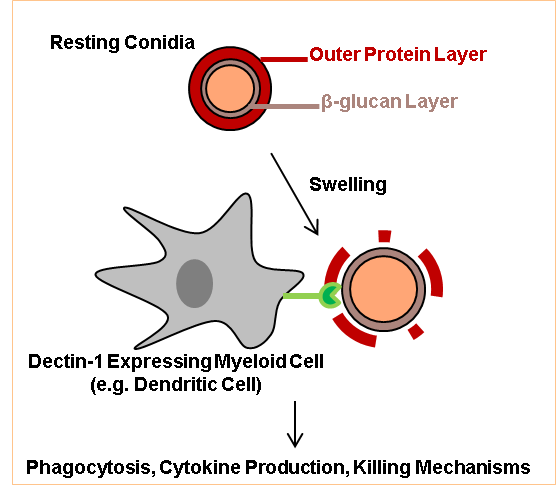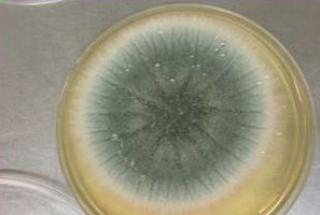BiteSized Immunology: Pathogens & Disease

Aspergillus fumigatus
Aspergillus fumigatus is an opportunistic fungal pathogen. The spores of this fungus, called conidia, are found widely in the environment and it is thought that we inhale several conidia daily. When we inhale conidia, resident immune cells in our lungs phagocytose and destroy them − preventing them from causing an infection. Alveolar macrophages in the lung are the primary line of defence against conidia.
As with many fungal pathogens, when the immune system becomes impaired we become highly susceptible to A. fumigatus infection. A. fumigatus causes a wide range of infections, including chronic lung disease (chronic pulmonary aspergillosis) and life-threatening systemic infection that can involve multiple organs (invasive aspergillosis). A. fumigatus is a major concern for patients undergoing haematopoetic stem cell transplantation, patients with chronic neutropenia (a reduction in circulating neutrophils) and patients receiving high-doses of steroids.

If the immune system is ill-equipped to deal with inhaled conidia, these spores can start to swell and form filamentous forms called germ tubes (short tubes) and hyphae (long tubes). These elongated cells can penetrate host cells and cause damage. Our immune system also reacts more violently to these forms of the fungus which stimulate production of pro-inflammatory cytokines and may contribute towards immunopathology.
Immunity to A. fumigatus
When conidia swell and start forming germ tubes/hyphae, the fungal cell wall starts to change. This results in exposure of previously hidden pathogen-associated molecular patterns (PAMPs); key molecules recognised by receptors of the innate immune system (pattern recognition receptors, PRRs).
For example, β-glucans primarily make up the cell walls of fungal hyphae but are shielded from the immune system in conidia by a proteinaceous layer. β–glucans are recognised by the PRR, Dectin-1, expressed by myeloid cells, which initiates inflammatory responses to most types of fungi (Figure 1). In A. fumigatus infections, Dectin-1 mediates uptake and killing of A. fumigatus. Humans with a point mutation in the Dectin-1 gene are highly susceptible to A. fumigatus infection following transplants and this is cited as a risk factor.
Lastly, epithelial cells which line the lung can also protect against A. fumigatus invasion. Epithelial cells also express PRRs, including the recently charcaterised MelLec. MelLec binds to melanin, which is expressed by conidia (and thus appear green/black; Figure 2). MelLec is an important receptor for protecting against A. fumigatus infections, and similar to Dectin-1, point-mutations in this gene in humans are a risk factor for invasive A. fumigatus infections.

Reviewed and updated in February 2021
© The copyright for this work resides with the BSI
